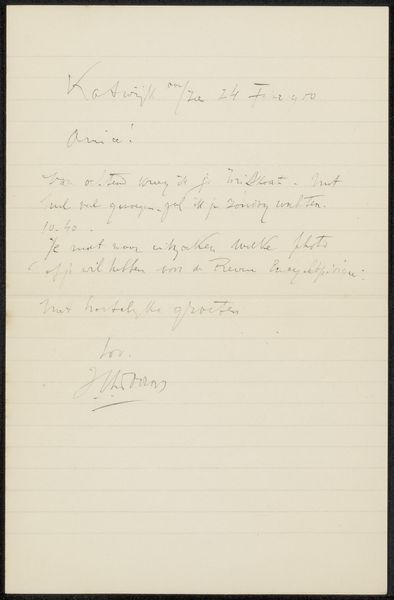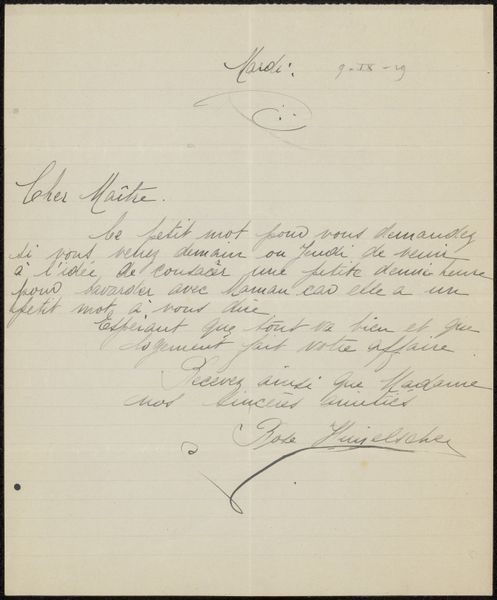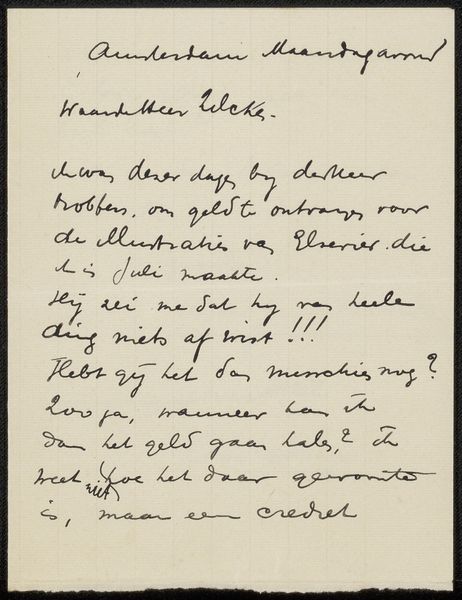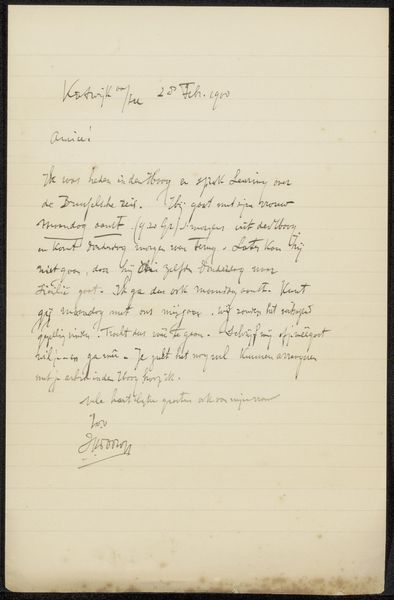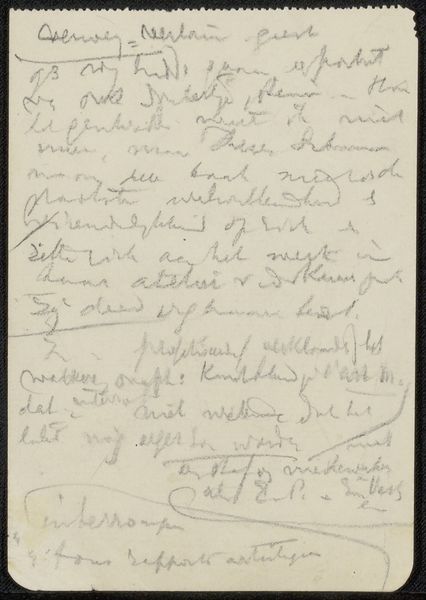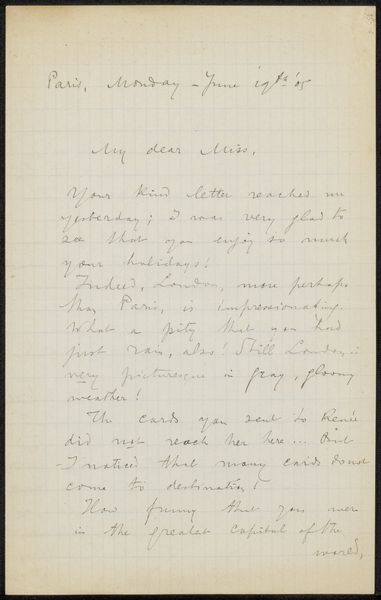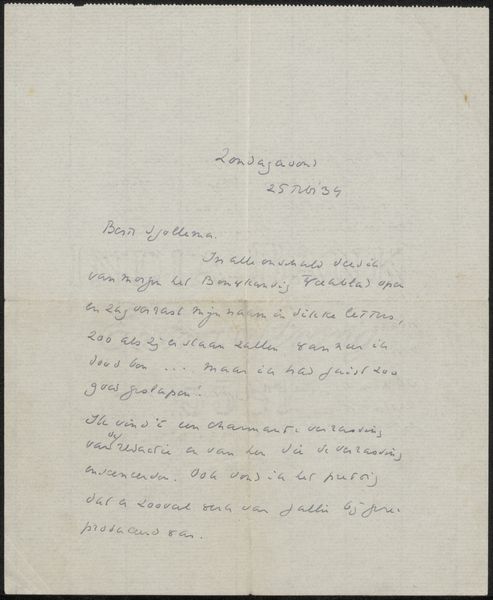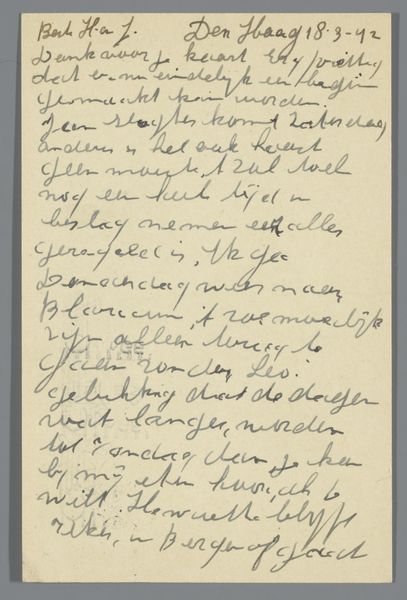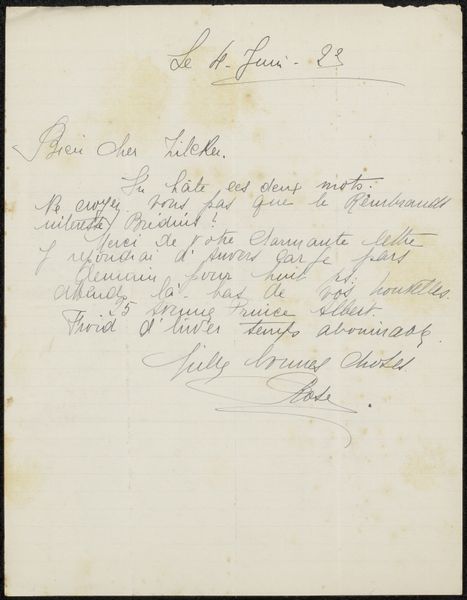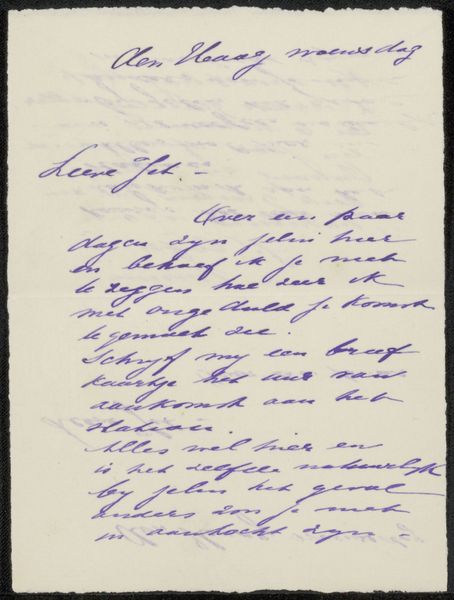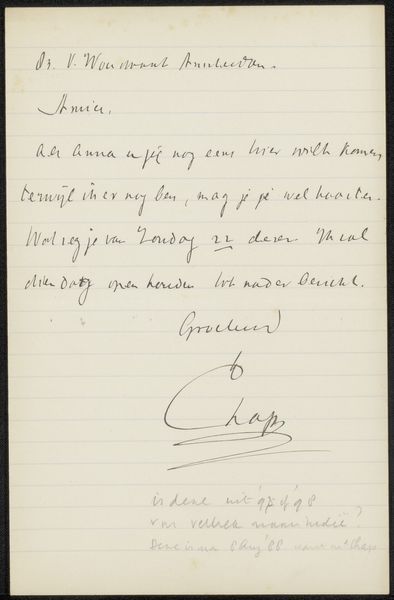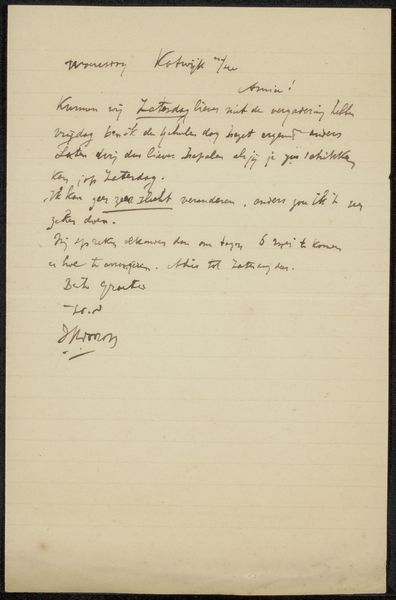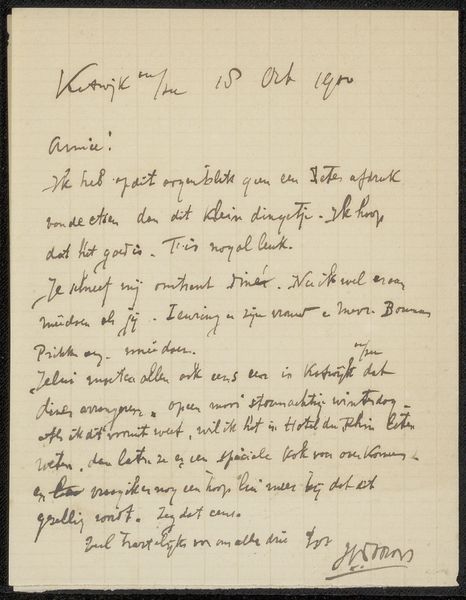
drawing, paper, ink, pen
#
drawing
#
hand-lettering
#
old engraving style
#
hand drawn type
#
paper
#
personal sketchbook
#
ink
#
hand-drawn typeface
#
pen-ink sketch
#
ink colored
#
pen work
#
sketchbook drawing
#
pen
#
post-impressionism
#
sketchbook art
Copyright: Rijks Museum: Open Domain
Editor: Here we have F.M. Melchers' "Brief aan Philip Zilcken," created sometime between 1878 and 1930, made using pen, ink, and paper. It's literally a letter. What stands out to me is how raw and immediate it feels. What's your interpretation of this piece? Curator: I'm immediately drawn to the labor inherent in the piece. We often separate "high art" from the everyday act of correspondence, but this merges the two. Think about the materiality: the pen, the ink, the paper – mass-produced objects that became deeply personal through the act of writing. It makes me wonder about the socio-economic context of letter writing then. Editor: So you're saying the very materials themselves and the act of writing elevate the piece beyond just its content? Curator: Precisely! Consider the post-impressionist influence – challenging formal artistic conventions. Is the focus really the information being conveyed or the physical act of crafting this message, this object? The repetitive motion of the pen, the embodied labour, brings a certain artistic process into being. What do you think the purpose was in conserving something that appears to be very utilitarian? Editor: That's a good question, maybe because Zilcken himself was someone important in the art world at the time. The act of Melchers physically making this letter makes it something much more than just a note, more like… performance art? Curator: Yes, performance in the everyday! A re-thinking of value and consumption in the art world, right in front of us. We see the means of artistic expression being integrated into quotidian function. Food for thought. Editor: I never considered that! Now I’m wondering who else kept these letters, and if they understood the art involved. Thank you!
Comments
No comments
Be the first to comment and join the conversation on the ultimate creative platform.
